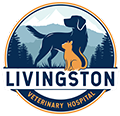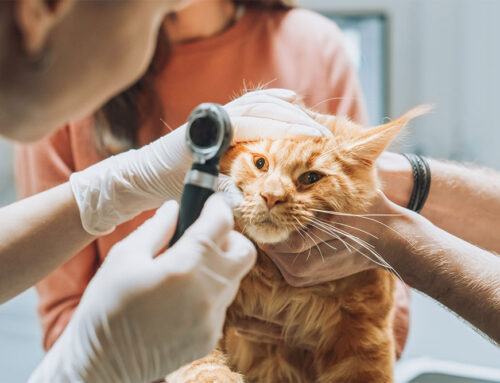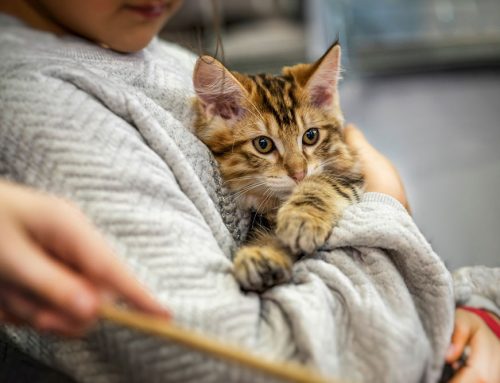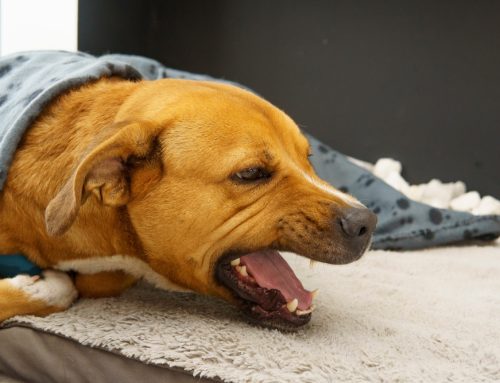An overview of pet obesity
Obesity is the most common nutritional health problem in pets, and the number of overweight and obese pets continues to grow every year. Roughly half of America’s pet population is overweight or obese, with pets 10% to 20% over their ideal weight considered overweight, and pets more than 20% over their ideal weight considered obese. Cats have edged out dogs in the chubby category—a 2018 Association for Pet Obesity Prevention survey found that an impressive 60% of cats were overweight or obese.
Weight-gain basics are easy to understand. Put simply, an animal will gain weight if the calories taken in are greater than the calories burned. Weight gain becomes complicated when accounting for certain risk factors, such as:
- Lack of exercise
- Breed disposition, such as Labradors, miniature schnauzers, dachshunds, Shetland sheepdogs, cocker spaniels, basset hounds, beagles, and Cairn terriers
- Increasing age, which causes the metabolic rate to decrease
- Certain endocrine disorders, such as hypothyroidism
- Certain drugs, such as corticosteroids and phenobarbital
A pet who falls into one of these categories will not automatically gain weight simply by looking at a bowl of kibble, but maintaining an older Labrador’s ideal weight if they develop hypothyroidism, for example, can be more challenging.
Health problems caused by pet obesity
We’ll admit that chubby pets have a certain cuteness factor, but we also understand that excess weight can adversely affect their health. Common health problems associated with obesity include:
- Decreased life expectancy
- Decreased quality of life
- Chronic inflammation
- Lung, heart, and blood vessel problems
- Exercise and heat intolerance
- Joint and musculoskeletal problems
- Compromised immune function
- Pancreatitis in dogs
- Diabetes and hepatic lipidosis in cats
- Difficulty undergoing anesthesia
Fat, or adipose tissue, was long considered no more dangerous than contributing extra stress on the joints and increased workload on the heart. We now know that adipose tissue not only packs on extra weight, but also produces hormones and protein factors that cause low-grade, chronic inflammation and increased oxidative stress, which are linked to osteoarthritis and diabetes.
How to help your pet lose weight
After discovering how adipose tissue harms your pet’s health, it’s time for your furry pal to shed those extra pounds and reach their ideal weight. The most successful weight-loss programs use a combination of methods to ensure your pet remains healthy while losing weight. To help your pet reach and maintain an ideal weight, follow these tips:
- Determine your pet’s ideal weight — Figuring out exactly what your pet should weigh can be a bit tricky. Instead, judge your pet’s body condition score, and work to reach her ideal condition. For help determining your pet’s current body condition, and calculating how many calories she should be eating for weight loss, contact us at Livingston Veterinary Hospital.
- Choose a proper weight-loss diet — Many people believe that feeding less of their pet’s regular maintenance food will be sufficient for losing weight. While that may decrease your pet’s weight, the proper nutrient ratio may be lacking. When cutting calories, choose a therapeutic weight-loss diet, such as Hill’s Metabolic, to restrict caloric intake while still providing appropriate nutrient amounts. The right food will not only help your pet drop unnecessary pounds, but more importantly, help keep them off.
- Skip the junk food — Is your pet used to a treat after each trip outdoors? Or do they share a bite of each snack you eat? If your furry pal demands treats, skip the commercially produced treats that are high in fat, sugar, and calories, and treat her with fresh veggies and lean meat instead. Many dogs actually enjoy fresh broccoli, carrots, and cauliflower, and your cat will be tempted with a small bite of plain, baked chicken breast. Remember that your pet’s favorite chews can be high in calories also. Contact our hospital for healthier alternatives.
- Find fun activities for your pet — The same old toys and games quickly become boring, so change up your pet’s daily activities and play with novel toys to encourage them to get up and get moving. Create an indoor agility course for your dog, or train new obedience skills. Laser pointers and feather toys are great for cats, or consider building a lookout tower or “catio” for your feline friend.
- Ditch the food dish — If your pet’s food dish is always full, you’re not doing their weight any favors. Calculate your pet’s daily caloric needs, divide it into meals, and measure out the correct amount of food for each meal. Use a puzzle feeder instead of your pet’s regular dish, to encourage your four-legged pal to burn energy while eating.

- Weigh your pet biweekly — While we all want to drop extra weight immediately when starting a diet, losing about 1% of body weight per week is much healthier and safer for your pet. For the most accurate weigh-in, swing by our hospital for a quick visit and weight-friendly snack. Alternatively, you can hold your pet at home, weigh you both, and subtract your weight.
Is your pet still struggling to shed those extra pounds? An underlying medical issue may be a contributing factor to excess weight. Schedule an appointment with our team, to determine why your furry friend is more fat than fluff.







Leave A Comment